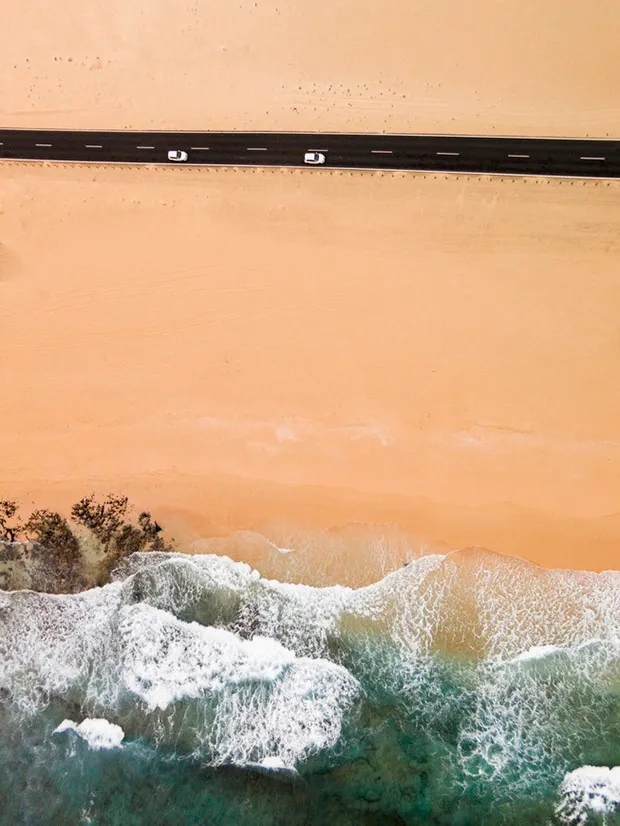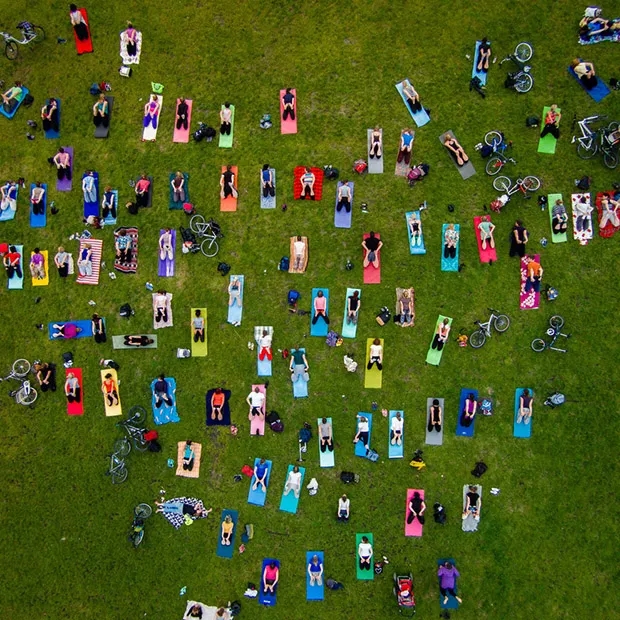
Always wanted wings to see the world as birds see it, not as we humans do. Self-taught Lithuanian Photographer plunged into drone photography as soon as the DJI Phantom was released, but his ultimate destination had always been the skies.
Janulis’ images are so unique because they don’t follow the usual cliches. His drone photos are not cold and mechanical, but full of human presence. He finds the people and their everyday lives just as fascinating as the most breathtaking landscapes.
The photographer talks about his journey, the future of drones and what advice he would give to anyone who wants to follow in the footsteps of this talented man.
What made you want to start taking pictures with drones instead of from the ground? What attracted you to shooting from above, rather than the ground? “I had noticed breathtaking perspectives while flying hot-air balloons, motorgliders, and regular airplanes some time before I started drone photography. I began by simply trying to reach a higher altitude, until the world became small. “It’s a new world that is still unknown to us.”
What is your method for selecting locations?
“In the beginning it was simple because I or anyone else had not yet discovered most of the interesting places and action from above. So, I imagined how the places would look from above and then started thinking about them. Then, if it looked interesting, I would fly and shoot.
“Now, I like to go on road trips in Lithuania or anywhere else and look around until I find some interesting sights. Then I either fly over it or come back later. Most interesting subjects are usually close by, off to one side. “We just need to be aware of it.”
Where is your favorite place for drone photography?
“Even today, the majority of places I’ve shot from the air have left an impression on me.” The views I saw from the air above the Atlantic Ocean on the Canary Islands in Spain were probably the most stunning.
Can you explain the steps to get on an area after you have selected it? Do you need to fill out any paperwork? Are there any legal obstacles, etc.?” Up until now, I have not encountered any legal obstacles or other significant obstacles during my drone photography process. At first, I simply picked the location and flew there. They have actually closed many areas of the large cities with restrictions on flying. Drones are now subject to new rules. I am insured, I’ve passed the flight test and I have a commercial license. I still think that the laws and actions against drones is way too strict. “It is already the future, and we can’t stop it by prohibiting usself.”
Do you plan your shots or just go with the flow when you shoot?
“Leaving things to chance will not always result in a positive outcome. I have a scene in my head and a plan before I start shooting. Then, all that is left to do is wait for the perfect timing and natural lighting.”
What are the challenges you face when taking photos with drones How has your learning curve been? “I hear people saying they want to buy a drone so that they can take nice videos and photos. They don’t realize the cost, the dependence on electricity (I charge it constantly), the legal obstacles, the constant danger of damaging or injuring someone, as well as the extra weight and the weather. Flight is impossible when it’s too windy or wet. Each drone pilot must learn specific, special things about this activity. They learn from their mistakes. “You need to fly regularly for at least one year before you can develop the necessary skills.”
“Drone photography changed my life completely. It’s become my way of life. As a pioneer I have seen many things. I’ve opened up brand-new views from above. I’ve noticed the play in shadows. And truly experienced the flight. “All of this is still an adrenaline rush and turns into an addiction.”
